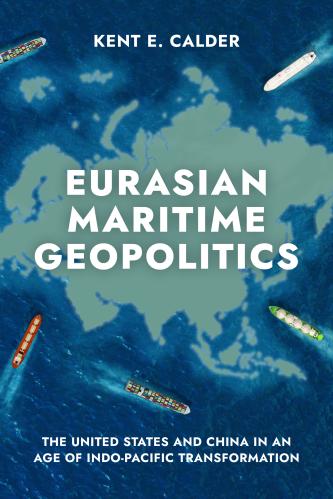Editor’s note: This is based on a presentation given at the Minneapolis Federal Reserve Symposium: Ending Too Big To Fail, on April 4.
Calls to break up the “big banks” remain part of the political and economic discourse, and understandably so. The financial crisis of 2008 has left a severe scar on the American economy and continues to impact the lives of millions of families. While leaders in charge during both the Bush and Obama Administrations rejected the idea of breaking up the big banks, significant and vocal supporters of break-up on both ends of the political spectrum continue to press their case including presidential candidate Bernie Sanders and former candidate Rick Perry. The debate often focuses on important questions of whether the current post-reforms of the Dodd-Frank financial regulatory structure are sufficient to solve problems of systemic risk, financial stability, and too-big-to-fail, or whether a more radical approach is warranted. However, that framing is too narrow to produce the right answer.
I propose four simple questions by which to evaluate any proposal to break up the big banks. The goal of these questions is to determine the practical ramifications of break-up proposals, and also to highlight the trade-offs of break-ups for most Americans. Answering these questions moves the policy debate from the abstract to the specific and may suggest different conclusions. While big banks are extremely politically unpopular, people are increasingly banking at large banks. It is similar to the fact that while nearly 90 percent of Americans disapprove of Congress, most people still vote to re-elect their own Congressman, and 90 percent of members of Congress get re-elected.
Question One: Can I Keep My Bank?
Calls to break-up the banks usually propose doing so by one of two mechanisms: a cap on the size of any single bank, or a separation of business lines between commercial banking and other activities such as investment banking or insurance. A cap on size would inherently mean that millions of Americans would be forced to switch their banks once larger banks were forced to drop customers to conform with the size limits. Changing banks would impose both a one-time transition cost on millions of account holders and many would also incur more in ongoing fees and expenses that result from having access to smaller ATM networks, fewer convenient locations, and a lack of broader services. Break-ups would raise important questions over how millions of consumer and business accounts would be allocated in the break up and what say the customers would have. Banks would try to balance between their goal of shedding less profitable customers and fair-lending and equal-opportunity-to-credit laws. Regulators would have to decide how heavy a hand to play in shaping these decisions.
In reality, consumers have been choosing large financial institutions at a greater rate than smaller institutions, with research from the Bipartisan Policy Center concluding that, “This preference reveals that consumers perceive real value from these banks. This value may be growing as a result of technology, particularly in the Internet, mobile, and ATM network space.” In this sense, a government-led break-up of large banks runs counter to consumers’ revealed preferences.
A set of alternative proposals would separate banks by function. This approach often calls for reinstating—in original or modified form—the Glass-Steagall Act, named after the famous 1930s law that included a separation of these functions. Doing so would not necessarily limit any bank size, but rather constrict its function by putting a wall between commercial and investment banking.
But this type of separation would not just affect the largest banks like Bank of America and Merrill Lynch. USAA and Ohio Farmers would be restricted to selling either insurance or providing banking services, but not be allowed to do both as they currently do. Customers of E-Trade Bank would be cut off from E-Trade Brokerage and vice-versa. Glass-Steagall was undermined over time by a series of loopholes created both legally and through regulation, before being significantly softened in 1999 by the Gramm-Leach-Bliley Act. [1] One presumes that a new version of Glass-Steagall would not include such loopholes. Thus non-commercial banks like Fidelity and Schwab would not be allowed to offer customers bank-like services such as checks, credit cards, or ATMs. In this world, you can keep your bank—and some commercial banks may be very large—and you can keep your insurance company or broker-dealer, but any company that provided more than one service would be forced to choose between them and thus which service you could get from them. They may not be able to keep you.
Question Two: How Does a Global Business Like 3M Bank?
Global businesses want global banks. This makes intuitive sense for companies that manufacture, distribute, and sell products globally. 3M, for example, derives a majority of its sales from outside the United States, operates in more than 70 different countries, and sells products in over 200 countries. [2] The management of payments and sales within a company and through its distribution network becomes easier in partnership with financial institutions with global footprints. A majority of the CEOs surveyed by the Business Roundtable cited large U.S. banks’ cash management, foreign exchange, and cross-border payments services, as well as the debt and equity offerings provided by large banks, as essential to their businesses. [3]
How would the break-up of large U.S. banks affect their ability to serve U.S. companies that operate globally? Global companies could use a consortium of many smaller banks for their operations which would, however, likely drive up their operational costs. The flip side of higher costs for companies may be higher profits for banks, particularly those banks that fill needs for smaller markets with less competition. Transferring profits from companies that manufacture and make things to banks that provide payment services would be an unfortunate and undesirable outcome. Yet, this may be a byproduct of a break-up proposal and proponents of such proposals should either account for it or explain why it would not occur.
An alternative outcome would be that 3M and other global businesses would simply choose foreign banks with global footprints to meet their business needs. Under this scenario, profits for these global banks may also rise somewhat because they face less competition from U.S. banks. More concerning would be the transfer and loss of American market share to global competitors, and cost American jobs. This loss could be compounded as other aspects of corporate relationships, including underwriting debt issuances, may move along with commercial retail relationships.
Former Chairman of the House Financial Services Committee Barney Frank (D-MA), no fan of big banks, recently wrote: “In light of the enormous disruption the system would suffer in the process of getting our largest institutions down to [around $600 billion in assets], and the serious disadvantage it would mean for American businesses in a global economy—both for those providing financing and those needing it—I am not surprised that the vigor with which some insist that only breaking up the banks can defuse the ‘too big to fail’ bomb vastly exceeds their willingness to tell us even approximately how low we must go.” [4]
These costs might be worth it given the negative consequences associated with financial crises, too-big-to-fail distortions, and other undesirable externalities from large financial institutions. But it is incumbent upon proponents of break-up to explain how their proposals would affect retail and corporate customers.
Question Three: What Does This Mean for U.S. Capital Markets and Debt Issuers such as Minnesota?
The United States has the deepest, most liquid capital markets in the world. These capital markets provide tremendous benefits to American governments through lower borrowing costs and the ability to transfer risks, including interest rate risk, to investors who can more easily absorb ups and downs. American businesses that can access capital market financing enjoy lower costs of capital, and often on more favorable terms, than foreign competitors. The rest of the world, from Europe to India, is trying to emulate U.S. capital markets. The largest U.S. banks, those that mix commercial and investment banking, as well as large investment banks that have become bank holding companies, are the major players in today’s capital markets. How would breaking them up affect the functioning of those markets? What would it mean to a state like Minnesota, which this year alone is likely to raise $1.5 billion in financing from the capital markets? [5] What about the many cities and municipalities that also raise billions of dollars through issuing debt?
This question highlights the difference between commercial and investment banking. These activities were legally separated by Glass-Steagall in the 1930s through the 1990s when changes in market structure, financial innovation, legal loopholes, and regulatory policy choices blurred the distinction. Eventually, Congress eliminated the separation and allowed financial institutions to combine activities. Unfortunately, the word “bank” is now used interchangeably and sometimes without specificity to mean one, the other, or both activities.
Calls to break up banks along investment and commercial lines may lead to different outcomes for capital markets than overall limits on size. In addition, there remain many stand-alone investment banks (often called broker-dealers) that are not subject to prudential bank regulation by the Federal Reserve. Both Bear Stearns and Lehman Brothers, now both defunct, were examples of such stand-alone investment banks. The remaining members of the “big five” investment banks—Goldman Sachs, Morgan Stanley, and Merrill Lynch—are now bank holding companies regulated by the Federal Reserve. However, many smaller stand-alone investment banks, such as Raymond James and Jefferies, still exist outside the purview of federal prudential bank regulation. Would forcing Goldman Sachs or Morgan Stanley to sell their commercial banking subsidiaries really make them less systemically risky? How and by whom would they be regulated? Would they be designated as SIFIs (systemically important financial institutions) to be regulated by the Federal Reserve? Would size limitations be imposed upon stand-alone investment banks that are not part of any bank holding company?
Proponents of breaking up the banks have to explain how their proposals will impose size or activity limitations on both banks regulated by the Federal Reserve and those that are not. This conversation extends to capital flows in the so-called “shadow banking” system as well. How the break-up proposals will address this question will impact the functioning of the capital markets, which ultimately affect the lives of ordinary Americans.
Proposals that result in more stable but somewhat more expensive capital markets may be worthwhile tradeoffs, or may not. Proposals that result in more expensive and more unstable capital markets should be rejected.
Question Four: Are We Sure Dodd-Frank Isn’t solving the problem?
Many arguments for breaking up the banks assume the financial system has not changed much since the financial crisis. In doing so, they often fail to take into account the most sweeping set of financial regulatory reforms enacted into law since the Great Depression. The largest of these laws, the Dodd-Frank Wall Street Reform and Consumer Protection Act of 2010, was designed to address the same core problems that break-up plans aim to achieve: to eliminate bailouts, end too-big-to-fail, increase financial stability, and encourage a financial services sector that is safe, secure, and works for American businesses and consumers. Any break-up plan needs to explain how Dodd-Frank is inadequate and why breaking up institutions will work better. Further, because Dodd-Frank is a holistic (or as close to that as any banking law has been) set of reforms, a break-up plan needs to show how it will fit into the Dodd-Frank framework or whether it requires a new legal and regulatory structure. By analogy, the break-up tune may be catchy, but it needs to match the rhythm and sound that the symphony of bank regulators, policy makers, and financial institutions are currently playing to avoid a cacophony.
According to President Obama, here is what Dodd-Frank achieved:
“Taxpayers will not have to bear the costs of Wall Street’s irresponsibility: If a firm fails in the future it will be Wall Street – not the taxpayers – that pays the price.
Separates “proprietary trading” from the business of banking: The “Volcker Rule” will ensure that banks are no longer allowed to own, invest, or sponsor hedge funds, private equity funds, or proprietary trading operations for their own profit, unrelated to serving their customers. Responsible trading is a good thing for the markets and the economy, but firms should not be allowed to run hedge funds and private equity funds while running a bank.
Ending bailouts: Reform will constrain the growth of the largest financial firms, restrict the riskiest financial activities, and create a mechanism for the government to shut down failing financial companies without precipitating a financial panic that leaves taxpayers and small businesses on the hook.”
The White House summarizes the meaning of Dodd-Frank: “These new rules will build a safer, more stable financial system—one that provides a robust foundation for lasting economic growth and job creation.” [6]
Having worked on Dodd-Frank both for Senator Chris Dodd (D-CT) and in the Obama Administration, I am less objective on the shortcomings of the legislation. However, having just spent the last several years leading a project for the Bipartisan Policy Center examining how Dodd-Frank implementation is and is not working, I have found some areas where the law and implementing regulations could be improved, often significantly. However, overall, there is strong bipartisan consensus that the legislation made it much easier to allow large financial institutions, including investment banks, to fail without jeopardizing the broader financial system.
Put another way, if one could solve the “to-fail” portion of the too-big-to-fail problem, is that enough? I would argue yes, particularly if there are additional costs imposed by the regulatory system on institutions that are large and risky, given the potential negative externalities that they may cause. In fact, the regulatory system is already implementing increased regulatory and capital charges, often referred to as SIFI surcharges, for these systemically important financial institutions.
Nearly six years after Dodd-Frank’s enactment, it seems reckless to abandon the outcome of a deliberative, intensive process because we have not yet had a chance to test whether they will fully work. No one can guarantee that Dodd-Frank’s failure resolution regime will function in every instance any more than anyone can guarantee that every person will drive home without getting into a car accident. I can, however, guarantee, or at least urge all of you to take your chances and go home. While the Minneapolis Fed is a wonderful place, I don’t think we should all spend the night here.
[1] Contrary to popular understanding, Glass-Steagall was never legally repealed.
[2] http://solutions.3m.com/wps/portal/3M/en_US/3M-Company/Information/AboutUs/WhoWeAre/
[3] http://bipartisanpolicy.org/wp-content/uploads/2014/10/BPC-Big-Bank-Breakup-Arguments.pdf p.23
[4] https://www.washingtonpost.com/opinions/barney-frank-sanderss-too-big-to-fail-mantra-ignores-a-huge-problem/2016/03/17/ef8836c8-e92b-11e5-b0fd-073d5930a7b7_story.html
[5] Governor’s Capital Budget Recommendation, http://mn.gov/mmb/images/summary-jan-2016.pdf p.29
[6]These new rules will build a safer, more stable financial system—one that provides a robust foundation for lasting economic growth and job creation.
Klein has served as an unpaid member of the Clinton campaign’s Infrastructure Finance Working Group; he has not served as an advisor on any banking or finance issues.
The Brookings Institution is committed to quality, independence, and impact.
We are supported by a diverse array of funders. In line with our values and policies, each Brookings publication represents the sole views of its author(s).



Commentary
Four questions to ask before breaking up the banks
April 4, 2016